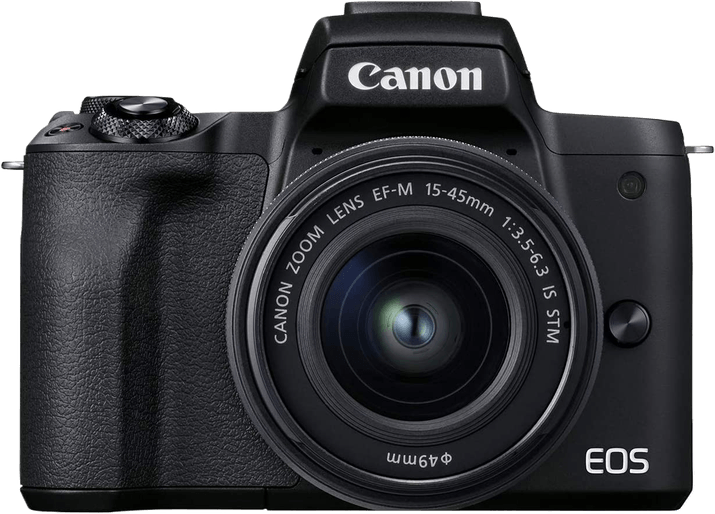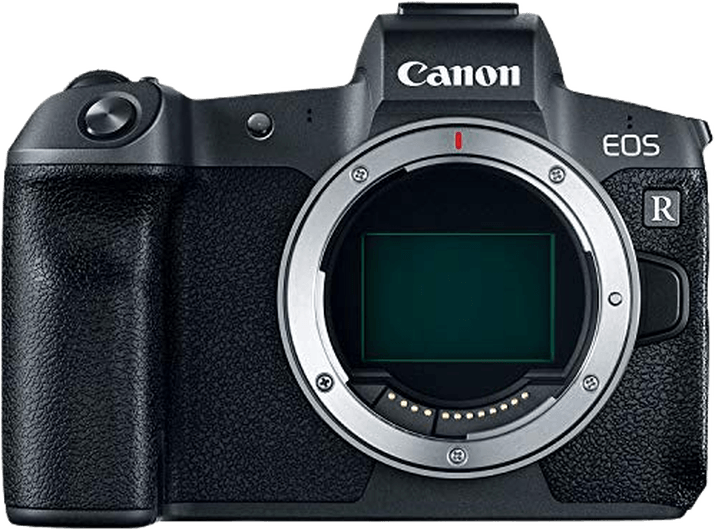Canon EOS M50 Mark II vs EOS R Comparison
Canon EOS M50 Mark II

Canon EOS R

The Canon EOS R outperforms the Canon EOS M50 Mark II with a score of 74/100, compared to 59/100. Both cameras are mirrorless and were released in 2018 and 2020, respectively. They share similar traits, such as being compact and lightweight, with the EOS R measuring 136 x 98 x 84mm and weighing 485g, while the EOS M50 Mark II comes in at 116 x 88 x 59mm and 387g.
The EOS R excels with its higher score, which reflects its superior performance and features, justifying its higher launch price of $2300 compared to the M50 Mark II’s $750. On the other hand, the EOS M50 Mark II offers a more budget-friendly option without sacrificing too much quality.
Considering the specifications, the Canon EOS R emerges as the better camera, while the Canon EOS M50 Mark II provides a more affordable alternative for those seeking a capable mirrorless camera.
Canon EOS M50 Mark II vs EOS R Overview and Optics
The Canon EOS R outperforms the Canon EOS M50 Mark II in optics, scoring 73 out of 100 compared to the M50 Mark II’s 59. Both cameras share several specifications, including a CMOS sensor type, Digic 8 processor, and the absence of image stabilization. However, there are notable differences that make the EOS R the superior choice in terms of optics.
The EOS R boasts a higher megapixel count at 30.3, compared to the M50 Mark II’s 24, allowing for more detailed and higher resolution images. Additionally, the EOS R’s full-frame sensor size surpasses the M50 Mark II’s APS-C sensor, providing better low-light performance and enhanced image quality. The EOS R’s DXOMARK sensor score of 89 also emphasizes its superior image quality over the M50 Mark II’s score of 58.
Despite the EOS R’s advantages, the M50 Mark II exhibits a faster shooting speed at 10 frames per second, compared to the EOS R’s 8. This could be beneficial for capturing fast-moving subjects or action shots. However, the EOS R’s higher optical performance outweighs this advantage.
The lens mount on each camera is different, with the EOS R using the Canon RF mount and the M50 Mark II using the Canon EF-M mount. This distinction affects the variety and quality of lenses available for each camera, with the EOS R having access to higher quality RF lenses.
Considering these factors, the Canon EOS R is the superior choice for those who prioritize optical performance and image quality. Although the M50 Mark II has a faster shooting speed, its lower score and specifications make it less appealing for photographers seeking the best possible optics.
Canon EOS M50 Mark II vs EOS R Video Performance
The Canon EOS M50 Mark II emerges as the superior camera for video capabilities, outscoring the Canon EOS R by 21 points with a video score of 91/100. Both cameras share some common specifications, such as 4K max video resolution and 3840 x 2160 max video dimensions. Additionally, both cameras come equipped with built-in time-lapse functionality.
The EOS M50 Mark II surpasses the EOS R with its higher max video frame rate of 120fps, compared to the EOS R’s 30fps. This significant difference allows the M50 Mark II to capture smoother, more detailed slow-motion footage, making it a better choice for videographers who prioritize this feature.
In contrast, the EOS R does not offer any significant advantages in video capabilities over the M50 Mark II. Its lower video score of 70/100 and max video frame rate of 30fps make it less appealing for those focused on video performance.
The Canon EOS M50 Mark II is the clear winner when it comes to video capabilities, primarily due to its higher max video frame rate. This advantage makes it a more suitable choice for videographers seeking smooth, high-quality slow-motion footage. On the other hand, the Canon EOS R falls short in this aspect and does not offer any notable benefits in its video features. Therefore, for those prioritizing video performance, the M50 Mark II is the recommended choice.
Canon EOS M50 Mark II vs EOS R Features and Benefits
The Canon EOS R outperforms the Canon EOS M50 Mark II with a feature score of 87/100, while the M50 Mark II scores 70/100. Both cameras share several specifications, including a touchscreen, flip screen, WIFI, and Bluetooth. However, neither camera has GPS functionality.
The EOS R’s advantages lie in its screen size and resolution. With a 3.2-inch screen and a resolution of 2,100,000 dots, it provides a clearer and larger display than the M50 Mark II, which has a 3-inch screen and a resolution of 1,040,000 dots. This difference allows for better image preview and easier menu navigation on the EOS R.
Despite scoring lower, the M50 Mark II has its merits. It is a more compact and lightweight camera compared to the EOS R, making it easier to carry and handle during extended shooting sessions. However, this advantage does not outweigh the superior features of the EOS R.
In the end, the Canon EOS R is the better camera due to its larger screen and higher screen resolution, which contribute to its higher feature score. The M50 Mark II’s compact size and lightweight build are positive aspects, but they do not make up for its lower feature score. Therefore, the Canon EOS R is the clear winner in this comparison.
Canon EOS M50 Mark II vs EOS R Storage and Battery
The Canon EOS R outperforms the Canon EOS M50 Mark II in storage and battery with a score of 35/100 compared to 21/100. Both cameras feature a single memory card slot and support SD, SDHC, and SDXC memory cards. The EOS R, however, is compatible with faster UHS-II cards, offering an advantage in terms of speed and performance.
Battery-wise, the EOS R provides 370 shots per charge, using the LP-E6N battery type, while the M50 Mark II delivers 305 shots with its LP-E12 battery. Additionally, the EOS R has USB charging capability, which the M50 Mark II lacks.
Despite the lower score, the M50 Mark II still offers decent storage and battery performance for casual or beginner photographers. However, the EOS R’s compatibility with faster memory cards, longer battery life, and USB charging make it a superior choice for professionals or those seeking enhanced storage and battery capabilities.
Canon EOS M50 Mark II vs EOS R – Our Verdict
Are you still undecided about which camera is right for you? Have a look at these popular comparisons that feature the Canon EOS M50 Mark II or the Canon EOS R:
